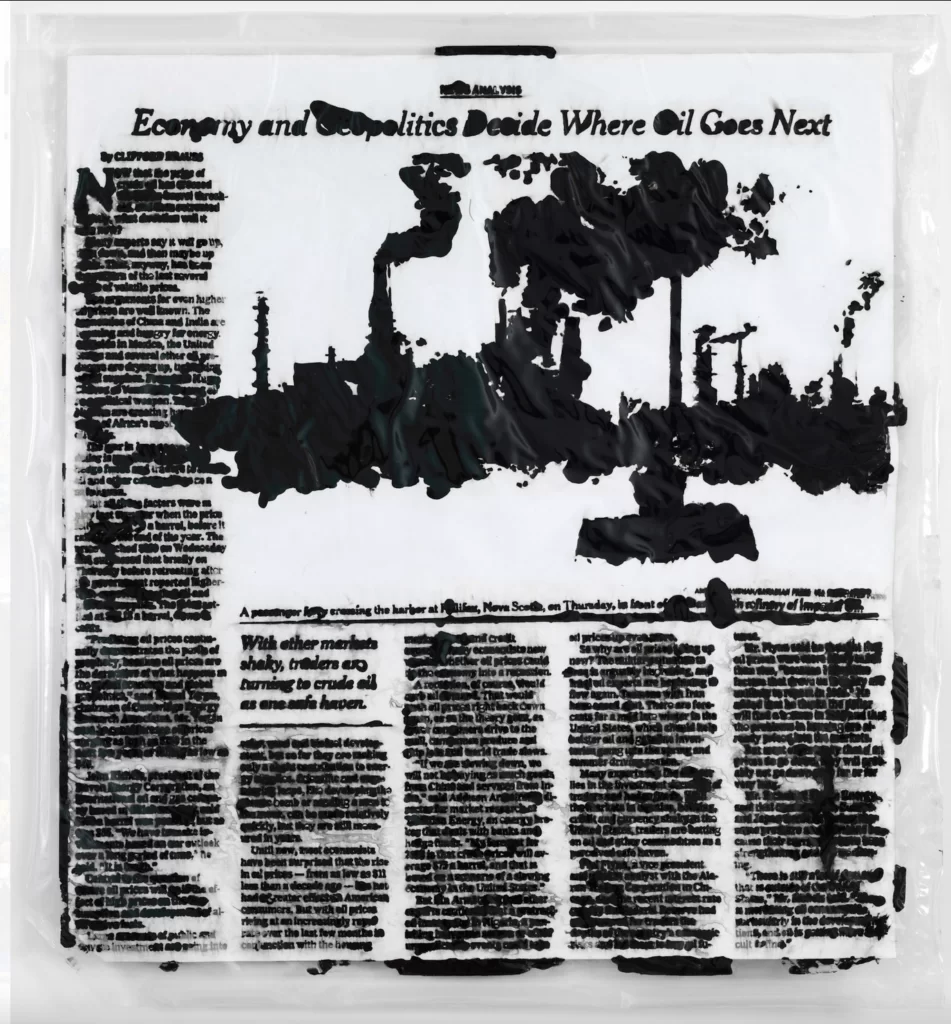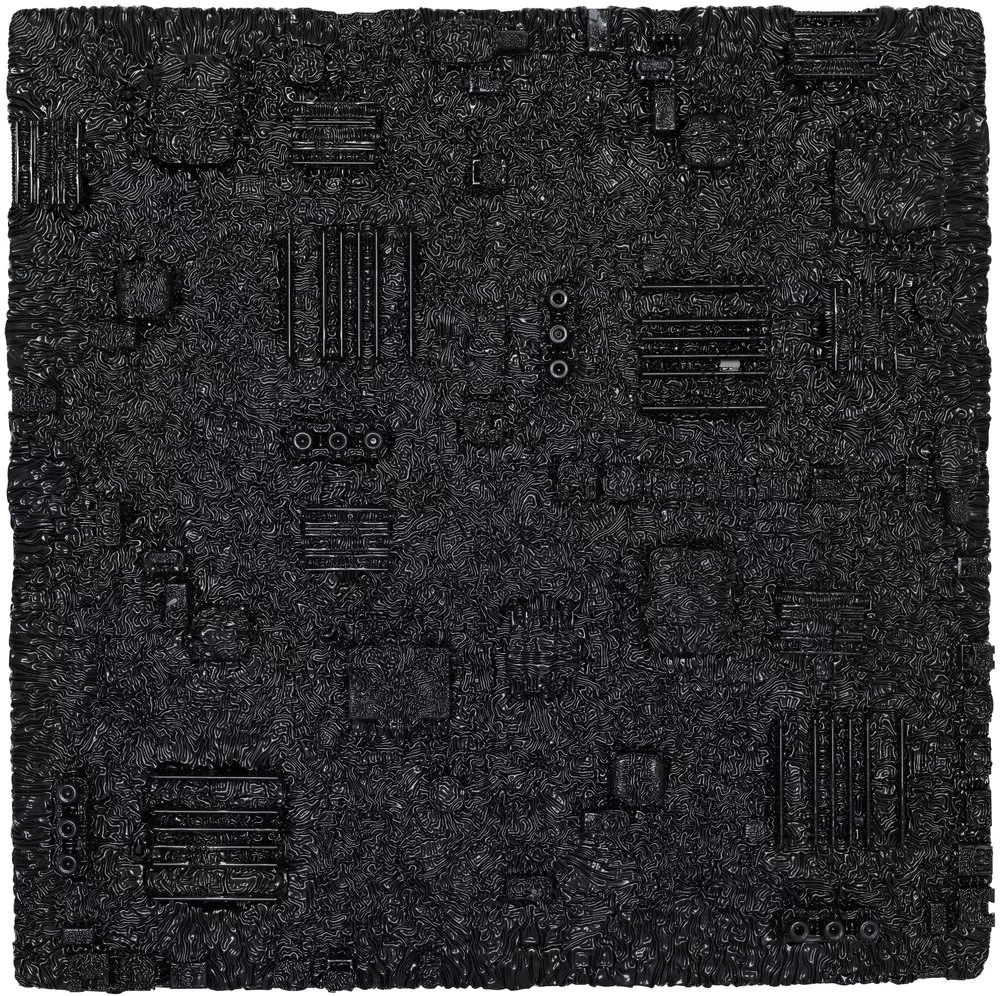Conceptual artist Analia Saban is all about pushing boundaries as her practice blurs the lines between painting and sculpture, imagery and objecthood. Born in 1980 in Buenos Aires, Argentina, Saban currently lives and works in Los Angeles. After receiving a BFA in Visual Arts from Loyola University in New Orleans in 2001, Saban gained an MFA in New Genres at the University of California in Los Angeles in 2005.
As an artist, Saban understands that experimenting is key to pushing the boundaries of what art can or should be. She doesn’t shy away from trying unconventional methods to challenge preconceptions about art.

Photo: Caren Levin
I try to live and let life, ideas, and art permeate through the creative process. A lot of the work starts with simple questions
Analia Saban
Saban approaches her practice with a scientific perspective; her expression is nothing short of telescopic observation as she critiques matters ranging from capitalism, social issues and politics; the consequences are fascinating and powerful.
In her latest experiment, Saban continues to explore the possibilities of artistic expression by combining traditional artmaking with the immersive capabilities of augmented reality. In partnership with the innovative ALDAR Studio, she is releasing a limited edition AR print. In this interview, we learn more about how Saban got started in arts, her creative process, and her AR print with ADLAR studio.
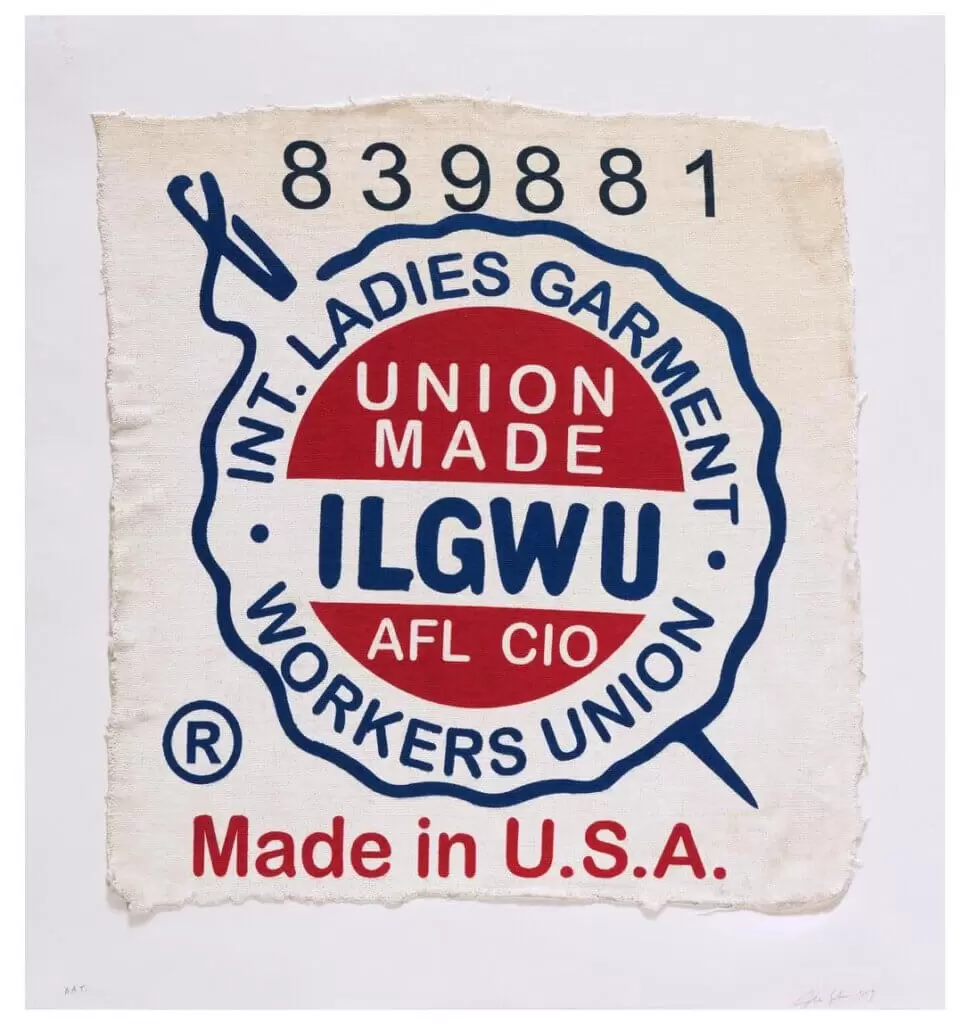
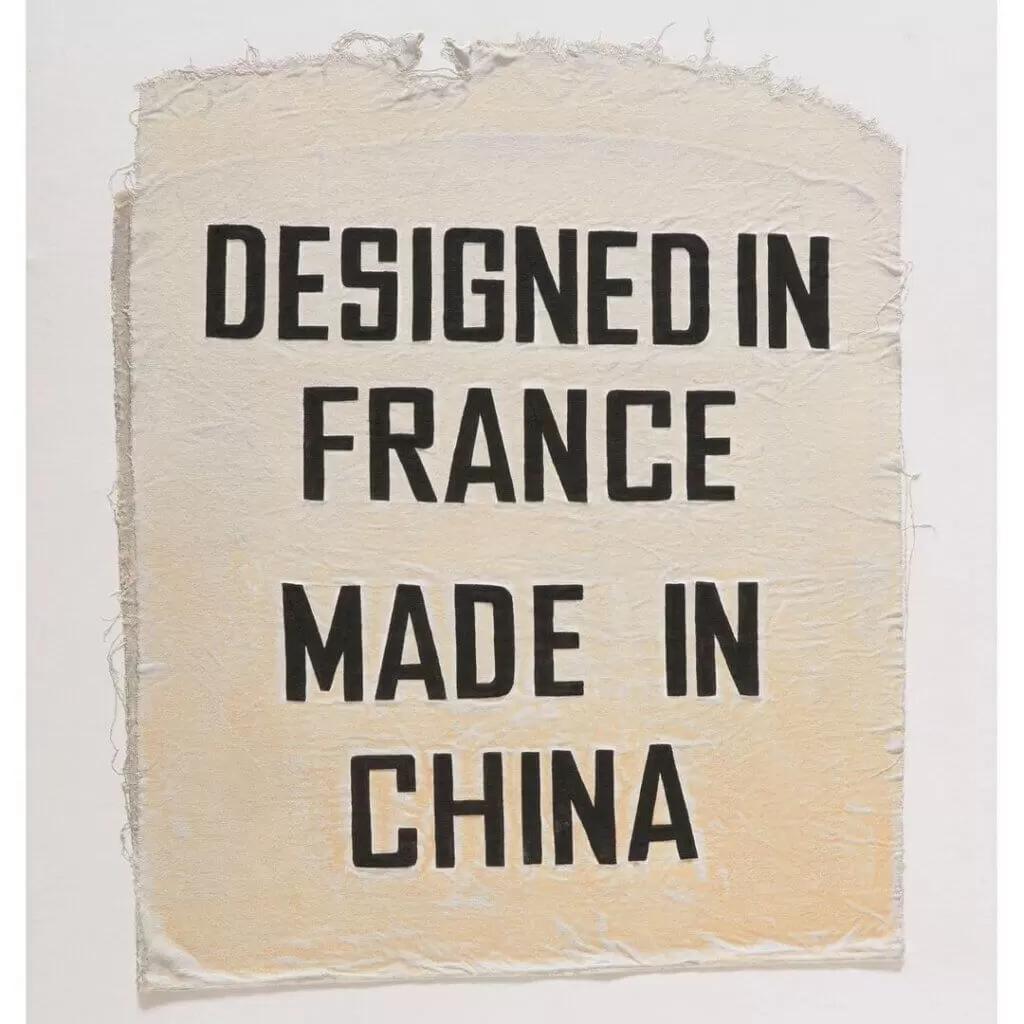
Q: Hi Analia! How are you doing? Thank you for taking the time out to speak with us. Can you please introduce yourself for those who do not know you?
Analia Saban: My name is Analia Saban. I live and work in Los Angeles.

Q: Can you tell us how you started in arts, how art has played a role in your life, and why you decided to become an artist?
Analia Saban: I grew up in Buenos Aires, Argentina. As a child, I wanted to be a mathematician or a computer scientist, but in my teenage years, I also developed a love for film. I came to the US to study Film and Television Production, but after a short trip to NY, where I saw MoMA, The Whitney Museum, and The Guggenheim, I quickly realized I wanted to become an artist. I switched majors, and I found art to be a place where I could combine all my interests.
Q: Your practice focuses on rethinking and redesigning traditional ideas about painting, using paint as the primary subject matter. Yet blurring the lines between painting and sculpture and imagery and objecthood, often drawing on historical art references and traditions. Can you share more about your practice, what inspires you, and how you go about creating your pieces?
Analia Saban: I try to live and let life, ideas, and art permeate through the creative process. A lot of the work starts with simple questions such as: What is Art?, What is it made of? What does it mean? Why do we look at it? The same goes for processes: What’s the history of materials for Painting? for Sculpture? for Photography? Through that process, I hope to create work that makes us think and hopefully ask further questions.
Q: Your release with ADLAR Studio, Pleated Ink, a physical artwork incorporated with Augmented Reality. What made you decide to integrate Augmented Reality immersive properties into your works?
Analia Saban: In the beginning, I was a bit skeptical about the idea of augmented reality and art. But once I saw the projects that ADLAR Studio, Adam Gross, and Larry W. Jones were working on, I got very excited about its possibilities. It allows me to add another dimension to the work. Just like ink or paint, I like to think of time as a material. It can really expand the work and the artist’s intention.
The studio is the sacred temple of creativity. What are three things you can’t live without in your studio?
Analia Saban: Music, green tea, an empty wall.
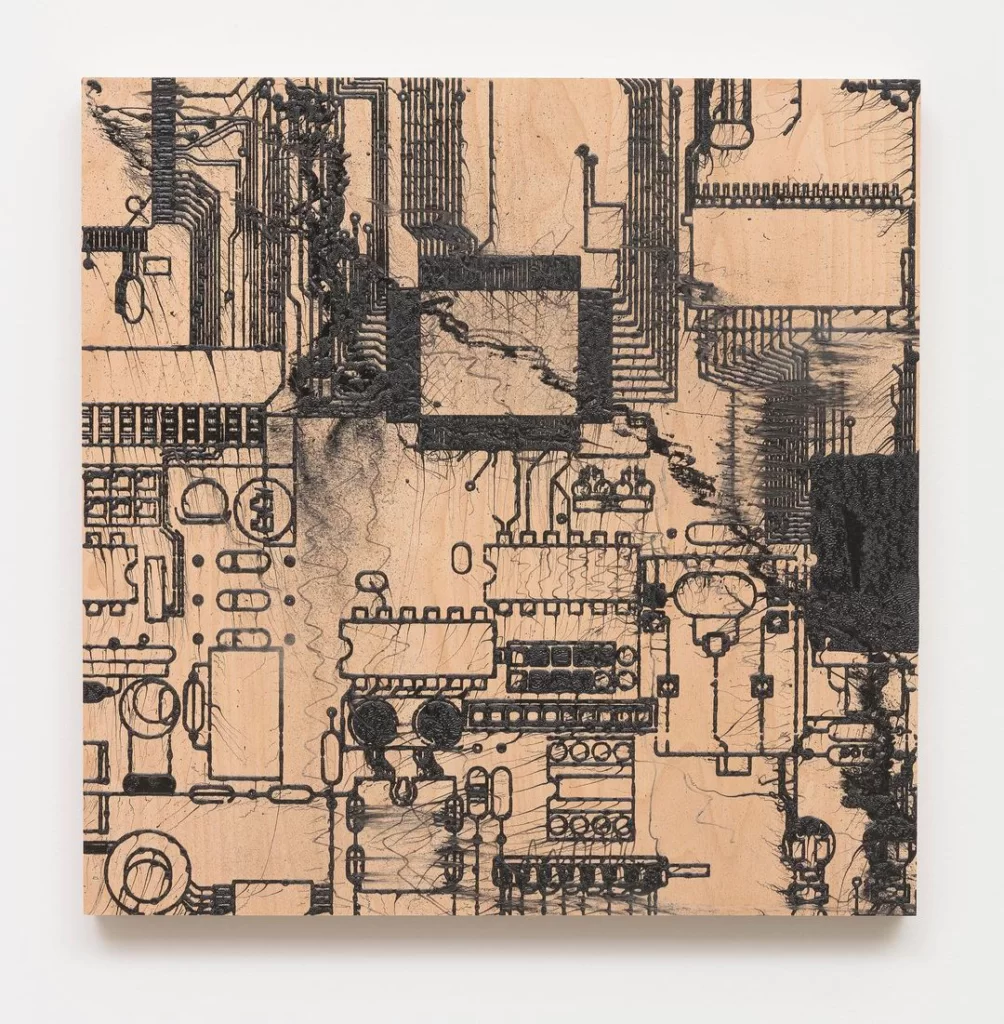
Ink on wood panel 30 x 30 x 2 1/8 inches
Image courtesy of Galerie Sprüth Magers
Q: In the past year, have you come across any artists whose work have caught your eye?
Analia Saban: I have been thinking a lot about all the generations of women artists who are finally starting to get a genuine appreciation for their work. One example that comes to mind is the work of Anni Albers. There is a considerable momentum now for weaving and its relationship to computer technology, which I think is thanks to practices like hers.
Q: What’s next for you as an artist?
Analia Saban: In 2023, I’ll be part of an exhibition at MoMA curated by Inés Katzenstein and “Braided Histories”, an exhibition at The National Gallery of Art curated by Lynne Cooke. Showing in the context of these institutions is a dream come true.
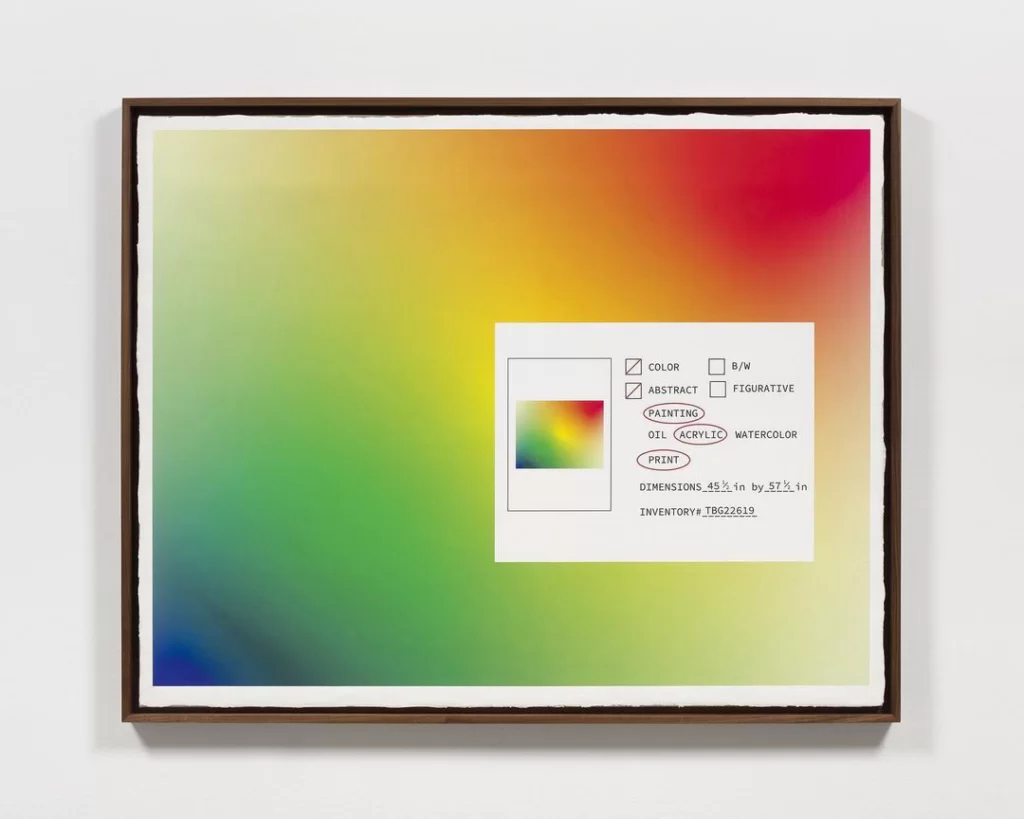
Pigmented ink monoprint on Belgian linen and acrylic paint
48 x 60 x 2 1/2 inches
Image courtesy of Tanya Bonakdar Gallery, NY
Q: Lastly, what does art mean to you?
Analia Saban: It’s a universal language beyond language that expands our idea of reality.
https://www.instagram.com/askunst/
https://www.adlarstudio.com/store/p/pleated-ink
©2022 Analia Saban, Caren Levin, Tanya Bonakdar Gallery



